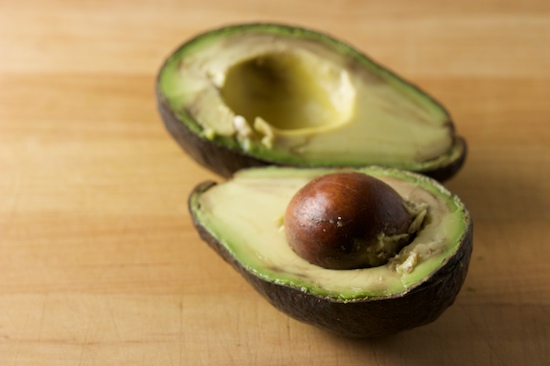Ever bought a perfect avocado that looks like it just dropped out of heaven only to get home and find a slimy brown mess? Or maybe had a not-so-good-looking one that turned out perfect once you cut it? For the untrained eye, picking an avocado is a hit or miss affair – you never know what you’re going to get. Avocados only ripen after they’ve been harvested, and this is why you will find them in the market at different stages of ripening. So how do you separate the wheat from the chaff when picking avocadoes? Here are some tips on how to tell if an avocado is bad.

Tips on Spotting Bad Avocados
1. Squeeze It
Gently squeeze the avocado. Find out whether it is squashy or firm. If it is rotten, it might feel like some parts have nothing inside. This is usually down to the spoilt inside. As a rule of thumb, the harder an avocado is, the longer it will take to ripen and go bad. If you’re buying several avocados, pick those at different stages of ripening.
2. Look Out for Blemishes
Dark spots, usually darker than the skin of the avocado, are a bad sign. Check whether the avocado has broken skin or soft spots. This is usually a sign that the avocado is about to go bad or has bruising. Go for avocados with even texture and color. Any blemishes are a sign of a low quality or bad avocado.
3. Slice It Open
A surefire way of telling whether an avocado is bad is to open it up. If it has gone bad, it should have black and dark brown spots starting from the stem of the avocado. If these bad spots only appear in a section of the avocado, you can cut them out and eat the rest. You shouldn’t have to throw away the whole avocado because of a small rotten portion.
4. Check the Color
The color of the outer peel largely depends on the variety of avocado. Fuerte and Bacon avocadoes usually have a thin skin that is smooth and green in color when they’re ripe and fresh. Gwen avocadoes have a pebbly green that’s dull and pliable at their peak. Lamb Hass and Hass avocadoes have a deep green and purple skin. Pinkerton avocados have a deep green skin. Reed avocadoes have a vibrant green skin with traces of pebbling. The Zutano variety features a yellow-green skin at their peak. As a rule of thumb, if an avocado has a deep black peel, it’s probably rotten.
5. Consider Time Of Harvest
Wondering how to tell if an avocado is bad? Find out when it was harvested and you’re likely to tell whether there’s a chance it has gone bad. Different varieties of avocado are harvested at different times of the season. The longer it has been since it was harvested, the more likely it is to be bad.
- Bacon varieties are harvested from late fall and early spring. They are considered a mid-winter variety.
- Gwen varieties are usually harvested during winter and fall
- Fuerte avocadoes are available from late fall and early spring.
- Pinkerton varieties are usually available from the beginning of winter to the end of spring.
- Reed varieties are available during summer and the beginning of fall.
- Lamb Hass and Hass varieties are available throughout the year.
- Zutano varieties are available from September all through the beginning on winter.
How to Properly Store Avocados At Home
The safest way to buy avocados is to buy them when they are green and unripe. Pick those that are hard to the touch and carry them home. Now that you’ve learnt how to tell if an avocado is bad, let’s go over a few tips on how to ripen them at home.
Store Them In A Paper Bag
If you’re not in a hurry to eat your delicious delights, you can leave them on your counter. They should ripen within 4 or 5 days. However, if you want the avocados to ripen much faster, put them in a brown paper bag along with a banana or apple. The additional fruits will release ethylene gas to help accelerate the ripening process. They avocados should be ripe in 2 or 3 days. Make sure to keep the paper bag away from direct sunlight to ensure they do not over ripen. When you’re ready to eat the avocados, pick them according to how ripe they are. Use the instructions given in part ne to determine which ones to start with.
Refrigerate
Once the avocados are ripe enough and you don’t plan on using them immediately, remove them from the paper bag and store them in the refrigerator. This will buy you about 3 more days. The cold slows down the process of ripening.
Note: You shouldn’t store unripe avocados in the fridge.
How to Preserve Cut Avocados
Now that you know how to tell if an avocado is bad, here are some tips on how to preserve one after you’ve cut it.
If you’ve already cut a ripe avocado and don’t want to use it immediately, or need only a portion of it, you can still preserve it by refrigerating. Squeeze some lime or lemon over the avocado to prevent browning and use a plastic wrap to seal it. Alternatively you can put it in an airtight container. You will need to use the avocado within the next 24 hours. Leaving the pit in after you’ve cut the avocado also helps prevent browning.